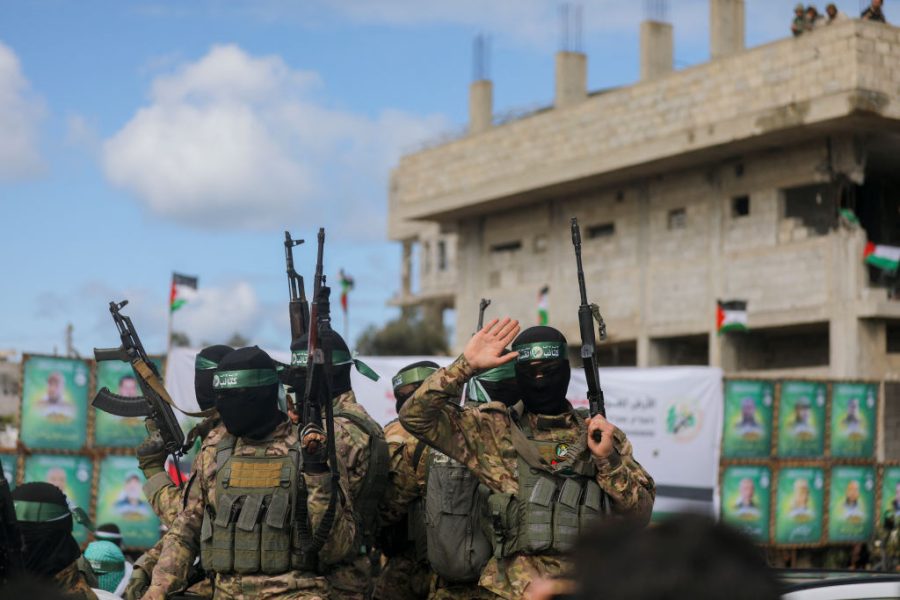The emergence of Yasser Abu Shabab and his ‘Popular Forces’ militia in eastern Rafah has become an unexpected fault line in the shifting landscape of Gaza. In recent days, a flurry of claims, counterclaims, and raw facts has begun to seep through the fog of war. Cracks are appearing in Hamas’s once unchallenged grip, and new and uncertain dynamics are taking shape. Where these currents will lead is unclear.
Abu Shabab himself has stepped into the spotlight with remarkable audacity. He has granted interviews, issued voice recordings, and cloaked his movement in the language of civic virtue. In a recent audio recording, he insisted: ‘We have not and will not work with the occupation. Our goal is to protect Palestinian human rights from Hamas’s terrorism.’ He described his group’s weapons as ‘simple weapons that we collected from the local population,’ and characterised coordination with the Palestinian Authority (PA) as limited to security screening:
We conduct a security check through the Palestinian intelligence service, which is cooperating with us in this matter, so we can guarantee that no terrorist elements enter.
While it would be rash to proclaim Hamas defeated, its aura of inevitability is fracturing
Yet behind the public bravado lies a more intricate web. Israeli sources indicate that the arming of Abu Shabab’s forces has been quietly fostered by elements within Israel’s security establishment under the doctrine of ‘the enemy of my enemy’. This reality burst into the open when the leader of the conservative Yisrael Beiteinu party, Avigdor Liberman, accused Prime Minister Benjamin Netanyahu of transferring weapons to Islamist clans in Gaza. In response, Netanyahu’s office notably refused to deny the claim, instead asserting that ‘Israel is working to defeat Hamas in various ways, on the recommendation of all heads of the security establishment.’ Later, Netanyahu himself openly admitted: ‘On the advice of security officials, we activated clans in Gaza that oppose Hamas. This is only good, saving the lives of our soldiers.’
Meanwhile, credible Palestinian sources suggest that Abu Shabab receives instructions from a senior adviser to PA President Mahmoud Abbas, even as the PA officially distances itself. The figure of Bahaa Balousha – a veteran PA intelligence officer long hostile to Hamas – emerges repeatedly in this narrative. His biography offers a stark glimpse into the brutal undercurrents of Palestinian political life.
Once a senior external operations officer in the PA’s general intelligence service, Balousha was catapulted to prominence in 2006 when three of his young sons – Osama (9 years old), Ahmed (7 years old) and Salam (4 years old) – were assassinated in Gaza, a calculated act of political murder amid the savage rivalry between Fatah and Hamas. The case remains a haunting testament to a political culture shaped less by parliamentary discourse than by assassination, clan vendetta, and factional warfare – lest we should forget that Middle Eastern politics is less concerned with peace and coexistence than with power and how to seize it. Balousha today remains enmeshed in the opaque intelligence networks that define the Palestinian arena – a world where shifting alliances and covert agendas trump any illusion of democratic normalcy.
Hamas, for its part, has responded with a rising tone of desperation. In propaganda aimed at Gaza’s population, it depicts Abu Shabab as a gangster and a stooge of Israel, whose forces loot aid and advance a sinister plan of mass starvation.
The shrillness of these claims is telling. That Abu Shabab’s Popular Forces operate openly – within an IDF-controlled zone, sheltering thousands of Gazan civilians – signals a breach in Hamas’s dominance. The movement has long accustomed itself to a monopoly on governance and security in the Strip; now, the spectacle of an armed, non-Hamas force coordinating humanitarian corridors and liaising with international relief efforts strikes at the very foundation of that monopoly.
Parallel developments deepen the sense of erosion. The Gaza Humanitarian Foundation has opened its fourth aid distribution centre in the Strip, delivering food and supplies beyond Hamas’s grasp. Each such outpost weakens the clientelist networks that have sustained Hamas’s rule.
Further underscoring this shift, Abu Shabab has now announced a recruitment drive for Gazans to staff an alternative administrative-governmental structure. The initiative seeks to attract professionals in health, engineering and construction, programming and computers, communication and documentation, legal and sentencing fields, welfare services, and languages and translation. This move points beyond armed resistance, suggesting the early contours of a parallel governance apparatus.
Hamas has responded swiftly. Channels affiliated with its Saham unit claim that the unit has captured Essam Nabahin, reportedly one of Abu Shabab’s men. If confirmed, this action reflects Hamas’s intent to stifle the nascent challenge before it gains further momentum.
Moreover, on Sunday, the IDF released what appears to be an internal Hamas personnel roster, captured during operations in Gaza. The document, drawn from Hamas’s own administrative files, lists members of its military wing by name, ID number, unit, role, and date of enlistment. Among those identified is a spokesman for Gaza’s Civil Defence, a supposedly neutral and civilian body. In reality, the roster identifies him as an active Hamas operative.
This must prompt a reckoning. For too long, Western outlets have uncritically echoed statements from such figures, failing to scrutinise their deep ties to Hamas’s war machine. The captured document offers irrefutable evidence of a deliberate strategy: Hamas embeds military operatives in civilian roles to wage information warfare. It underscores a broader truth – voices emerging from Gaza’s institutions cannot be presumed impartial; they are too often instruments of a terrorist movement committed to manipulation and deceit.
Taken together, these fragments hint at the shadowy outline of what ‘the day after’ might begin to resemble – a process unlikely to conform to any neat blueprint. Critics of Israel’s campaign have long demanded to see a fully-formed, technocratic plan for Gaza’s post-Hamas governance. Yet this was always a chimera. Political transformation in Gaza will proceed by fits and starts through the gradual erosion of old power centres and the messy emergence of contested, hybrid authorities.
Abu Shabab’s relatively tiny forces are no final answer, but they are a signal. Their emergence shows that Hamas’s monopoly is no longer complete. While it would be rash to proclaim Hamas defeated, its aura of inevitability is fracturing. That is no small achievement.
The Popular Forces’ visibility, the independent flow of humanitarian aid, the early moves toward alternative governance, and the exposure of Hamas’s calculated deceptions all suggest that, for the first time in years, alternatives to Hamas are becoming conceivable – however fragile, however fraught. Whether those alternatives will ultimately serve the interests of either Israel or ordinary Gazans remains an open question – one that will be answered not by strategy papers, but by events on the ground.








Comments